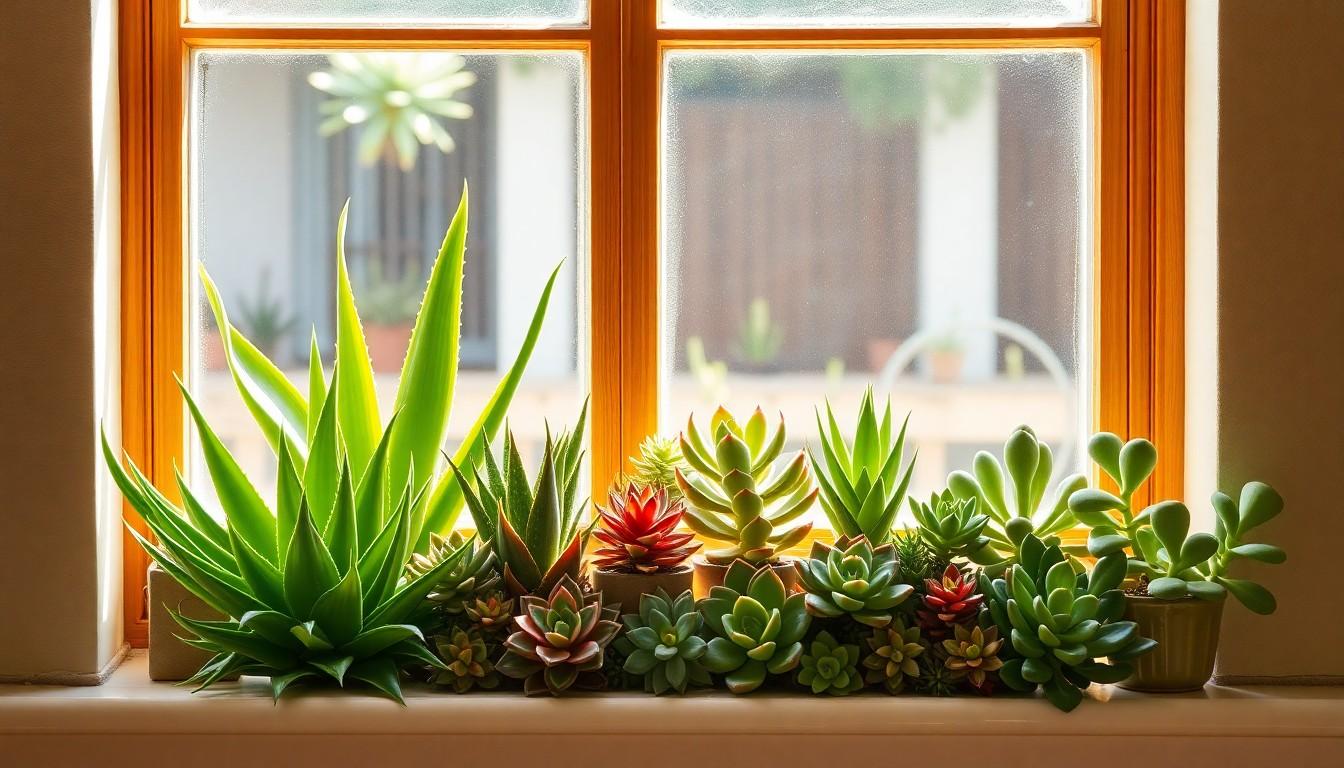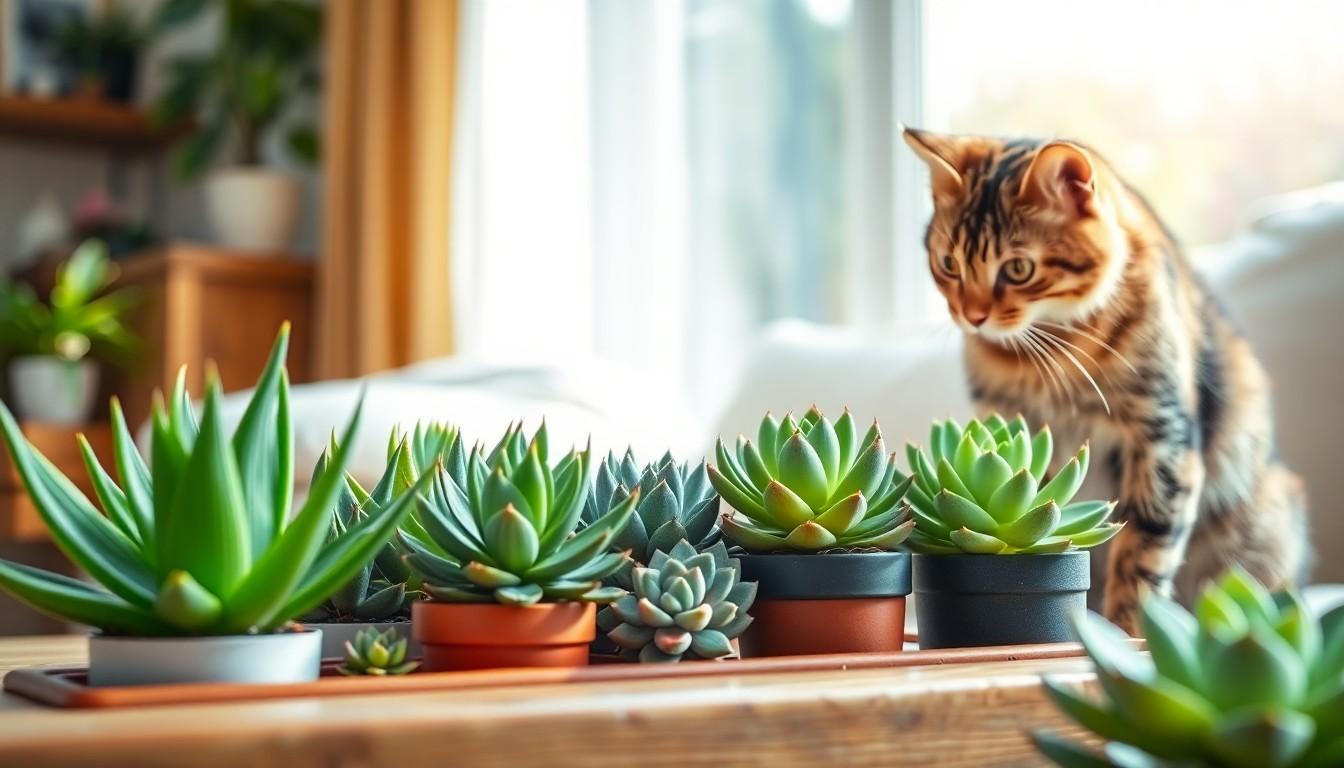Cats and plants can make for a purr-fectly delightful home, but not all greenery is safe for your feline friends. While succulents are trendy and low-maintenance, some of them can turn your cuddly companion’s curiosity into a cause for concern. Imagine Fluffy’s wide-eyed wonder as she inspects your new plant, only to find out it’s not just a pretty face but a toxic troublemaker.
Overview of Succulents Toxic to Cats
Certain succulents pose risks to cats, highlighting the need for careful plant selection. Popular varieties like Aloe Vera, while beneficial for humans, contain compounds that can cause vomiting and diarrhea in felines. In addition, Jade Plant, commonly found in households, can lead to lethargy and discomfort if ingested by cats.
Both Echeveria and Kalanchoe also rank among toxic succulents. Echeveria may cause gastrointestinal upset, while Kalanchoe can lead to severe heart issues in cats. Identifying these plants is essential to safeguard feline companions.
Additionally, the Burro’s Tail, though visually appealing, may lead to mild toxicity. Symptoms include drooling and nausea, which may require veterinary attention.
Caring for a cat-friendly home involves knowing which succulents to avoid. Researching each plant’s potential toxicity ensures peace of mind. For example, the Christmas Cactus is non-toxic and safe, making it a suitable alternative for plant lovers with cats.
Veterinary professionals recommend thorough assessment of all household plants. Cats are naturally curious animals and may explore their environment through tasting. Prioritizing safety includes understanding the plants that could harm pets, fostering a nurturing space for both cats and plants.
Common Succulents That Are Toxic

Certain succulents pose health risks to cats. Awareness of these plants helps ensure a safe environment for pets.
Aloe Vera
Aloe Vera contains saponins and anthraquinones, compounds harmful to cats. Symptoms of ingestion include vomiting, diarrhea, and changes in appetite. Distress may occur within hours of consumption. For curious cats, avoiding this plant is essential. Its attractive appearance makes it a common household choice, but safety for pets is the priority.
Jade Plant
Jade Plant, also known as Crassula ovata, can lead to significant lethargy and discomfort in cats. Signs of toxicity vary, but they often include vomiting and loss of coordination. Responsible pet owners should consider the potential risks before bringing this succulent into their homes. The plant’s popularity stems from its easy care, but the well-being of pets matters most when selecting plants.
Echeveria
Echeveria belongs to the group of succulents that can cause gastrointestinal upset in cats. Ingestion may lead to vomiting or diarrhea. Symptoms typically arise after a cat nibbles on leaves. Offering safe alternatives ensures a healthy living space for pets. While Echeveria can add beauty to homes, prioritizing pet safety is crucial when choosing houseplants.
Symptoms of Toxicity in Cats
Cat owners should be aware of various symptoms that indicate plant toxicity. Recognizing these signs early can help prevent further complications.
Gastrointestinal Issues
Gastrointestinal distress often manifests in several ways. Cats may exhibit vomiting or diarrhea after ingesting toxic succulents like Aloe Vera or Echeveria. Not only do these symptoms cause discomfort, but they can lead to dehydration if not addressed promptly. Increased drooling may also occur, which can signal an upset stomach. In severe cases, cats might refuse food due to nausea, highlighting the need for immediate veterinary attention.
Neurological Symptoms
Neurological symptoms can also arise from toxic plant exposure. Cats exposed to Jade Plant often display lethargy or coordination problems, affecting their ability to walk or jump. Disorientation may occur as well, leading to unusual behavior. Tremors or shaking have been reported in some cases, indicating a more serious reaction. If a cat shows signs of distress or uncharacteristic behavior after contact with succulents, seeking professional help is essential to ensure their health.
Prevention and Safety Tips
Ensuring a cat-friendly environment involves careful selection of houseplants. Identifying safe plants serves as a key strategy in preventing toxic exposure.
Identifying Safe Plants
Research specific plants before bringing them home. Check reputable sources for lists of non-toxic options. Look for labels or tags on plants. These often indicate whether something is safe for pets. Trustworthy organizations include the ASPCA and pet health websites. Recognizing safe plants fosters peace of mind, making home environments safer. Always observe your cat’s interactions with plants regularly. If curious cats show interest, redirect them toward safe alternatives.
Cat-Friendly Alternatives
Consider opting for succulents that won’t harm cats. Christmas Cactus stands out as a non-toxic choice, offering vibrant blooms. Spider Plant also provides a safe option with lush greenery. Boston Fern enhances indoor air quality while being safe for pets. Choose bamboo palms for an attractive, non-toxic houseplant. Engaging in cat-friendly garden selections enhances home aesthetics without compromising pet health. Adopting these alternatives ensures a safe space for curious cats to explore.
Conclusion
Creating a safe environment for cats involves careful consideration of the plants brought into the home. While many succulents are visually appealing and easy to maintain, some can pose serious health risks to feline companions. By staying informed about which plants are toxic and choosing non-toxic alternatives, pet owners can enjoy the beauty of greenery without compromising their pets’ safety. Regularly monitoring a cat’s interactions with houseplants and providing safe options can help prevent potential health issues. Prioritizing pet well-being ensures a harmonious living space for both cats and their owners.

